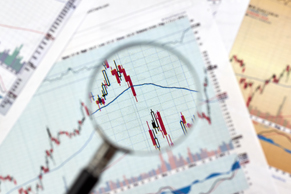Trading in the Gaps
Published by Sharekhan Education | June 16, 2022

Trading in the Gaps
By Ankit Saxena | Sharekhan Education
Gaps occur when the price jumps from one price point to another without creating continuous candles. Gaps occur when the low of the current candle is above the high of the previous candle or the high of the current candle is below the low of the previous candle. The white space or window created in the candles represents a price range where no stock has traded out of hand. Gaps occur mainly between days and not intraday. Gaps do not happen by themselves in market averages, but they need a strong reason to occur. For example, an event, such as election results, pandemic, news of fire etc. The types of gaps differ according to the context in which they occur. Some are significant, while others can be discarded.
Breakaway (or Breakout) Gaps:
Breakaway gaps are the most profitable, as they occur at the beginning of the trend. We can observe them when prices suddenly break through a formation boundary and a major shift in the trend begins. These gaps signal that the training is complete and that prices have broken through the boundaries. The strength of the price movement and the size of the gap appear proportional and generally accompanied by high volumes during upward gaps, but not necessarily during downward ones. An appropriate way to mint money while trading gap breakaway is to wait a while until the gap is filled. If not, enter a trade in the direction of the gap with a stop loss just below the gap.
Opening Gap:
When the stock’s opening price is beyond the previous day’s price range, it is called an opening gap. The price could continue in the direction of the gap which makes it a breakout gap or it could roll back from the opening to fill the gap. The gap opening pattern is sometimes useful in determining the stock’s turnaround. When trading the index, it should be noted that futures contracts are sold on a broad upward movement as gaps are often filled throughout the day. While in downward opening gaps, the filling is not as common. When trading stocks and commodities, a gap-filling shows signs of weakness and should not occur in a breaking gap. Whereas if the gap is not filled for the first half-hour of trading, the odds that prices will continue in the direction of the gap increase.
Runaway Gaps (or measuring gaps):
All gaps that occur in the direction of the trend are called runaway gaps. Such gaps appear in strong trends that have a minor correction and continue to rise or fall with no pullback or throwback.
Exhaustion Gaps:
Exhaustion gaps have similar characteristics to a runaway gap, as the former occurs at the end of the price movement and are unrecognizable due to similar characteristics to that of the latter. These gaps appear at the height of fear and greed when prices are trending strongly. They usually represent novice stocks that are eager to go up or down. These gaps can occur on low volumes but mainly occur on high volumes.
Other Minor Gaps:
Common gaps mainly occur in illiquid stocks, where gaps are small relative to the stock price and show up in the short term. These gaps have no consequence, and the only meaning is to suggest greater consolidation. Stock prices sometimes experience ex-dividend gaps when dividends are paid, but they usually adjust the following day.
This was about Trading in the Gaps. For a 360-degree understanding of trading and investing, its concepts, and its strategies, we highly recommend you go through our extensive courses. Pick out the one that best caters to your needs!
By enrolling in this stock market course, you can learn about the various aspects of trading in Futures and Options.




